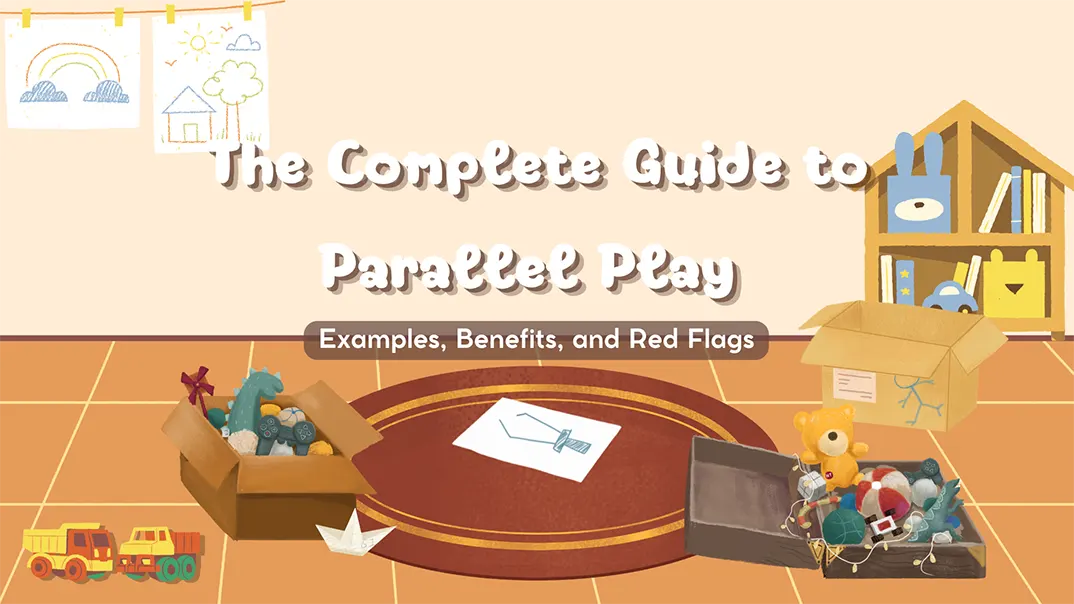When observing young children at play, it’s common to notice them sitting side by side, each engrossed in their own world without actually interacting. For many parents and educators, this raises a key concern: Is this type of behavior a sign of social withdrawal or developmental delay? Especially in a world that emphasizes teamwork and social engagement from an early age, parallel play can seem confusing or even worrisome.
Parallel play is a normal phenomenon for toddlers and preschoolers and a critical stage in their development. It usually emerges between 18 months and 3 years old and serves as a bridge between independent play and more cooperative social interactions. During this stage, children observe and learn from each other, gradually developing the skills needed for group play, empathy, and communication. Understanding parallel play can help caregivers support this natural process instead of misunderstanding it.
Recognizing the value of parallel play is just the beginning. To fully support your child’s growth, it’s essential to know what typical behavior looks like, how to encourage it, and when it might signal a more profound concern. In this guide, you’ll find real-world examples, expert-backed benefits, and potential red flags—all designed to help you navigate this subtle yet powerful stage of childhood development. Let’s dive in.
What Is Parallel Play in Child Development?
Parallel play is a fundamental stage in early childhood development, typically seen in toddlers between the ages of 18 months and 3 years. Unlike cooperative play, where children interact, share, and collaborate, Parallel Play involves children playing side by side but independently, with little to no direct communication or coordination. At first glance, it may seem like they’re ignoring each other, but in reality, a lot is happening beneath the surface.
In this stage, children are observing each other’s actions, learning through imitation, and becoming aware of social norms without the pressure of direct engagement. For example, two toddlers might sit on the floor with their own sets of blocks, occasionally glancing at what the other is building. They’re not building a tower together, but they are engaging in a silent, observational form of social learning that’s crucial to their cognitive and emotional growth.
Developmental psychologists consider parallel play a stepping stone between solitary play and more interactive stages, such as associative and cooperative play. It provides children with the comfort of independence while introducing them to the dynamics of shared space and mutual presence. One of the most important things to understand is that Parallel Play is not a sign that something is wrong. It’s a healthy and expected part of childhood. It lays the groundwork for essential life skills, such as patience, respect for others’ space, and observational learning.
Mildred Parten’s Social Behavior Theory and Stages of Play

To truly grasp the role of parallel play in a child’s growth, it’s essential to understand its origins within the broader context of play development. The concept of developmental stages in play was first introduced by sociologist Mildred Parten Newhall in the 1930s. Her pioneering research identified six distinct stages of play that reflect how a child’s ability to socialize and interact with others evolves over time. These stages are not rigid milestones but fluid phases, with children often moving back and forth depending on their mood, environment, or developmental pace.
Six Stages of Play:
- Unoccupied Play: This is the earliest stage, usually observed in infants. The child appears to be randomly moving, exploring their body or surroundings without a clear objective. While it may look aimless, it’s an essential form of sensory discovery and motor practice.
- Solitary Play: As babies grow into toddlers, they begin to play alone with toys and objects. In this stage, children are focused entirely on their activity, showing little interest in what others are doing nearby. It builds independence and concentration.
- Onlooker Play: Though sometimes listed earlier in development, this can occur at any stage. The child watches others play but does not join in. It’s often a learning phase where the child gathers information before engaging themselves.
- Parallel Play: This is the third stage and typically emerges between 18 months and 3 years. Children begin playing alongside others without direct interaction. While they may be using similar toys or engaging in similar activities, they do not coordinate or share tasks. This stage is critical for social awareness, as children start noticing peers and learning by observation.
- Associative Play: In this phase, children start to engage with one another but in a loosely organized way. They may share toys and talk during play, but there’s no common goal or defined roles. It’s a transitional stage toward more structured interaction.
- Cooperative Play: Here, children play together with a shared purpose, like building a tower, playing house, or engaging in group games. They communicate, assign roles, and follow shared rules. This stage typically emerges around age four or later and signals mature social skills.
Characteristics of Parallel Play
Understanding the unique features of parallel play helps parents, teachers, and caregivers identify it more easily and respond appropriately. This stage may look simple on the surface, but it’s packed with meaningful developmental activity. While children may appear disconnected during parallel play, they are building the foundation for future social interaction, emotional regulation, and cognitive growth. Below are the defining characteristics that set parallel play apart from other types of play:

- Physical Proximity: Children play close to one another, often within the same space, but without attempting to interact.
- Independent Activity: Each child focuses solely on their play, using different toys or engaging in separate tasks.
- Minimal Interaction: There is little to no verbal communication, eye contact, or cooperative effort between children.
- Passive Observation: Children watch others as they play, absorbing behaviors, techniques, and social cues without direct involvement.
- Imitative Behavior: While not directly engaging, children often mimic what their peers are doing, especially if they see something interesting or novel.
- Emotional Comfort: Children display calm and content behavior in the presence of peers, signaling early stages of social familiarity.
- Non-competitive Environment: Since interaction is minimal, competition over toys or space is rare, reducing the chance of conflict.
- Unstructured Play Patterns: Play is spontaneous and self-directed, without fixed rules, roles, or goals.
- Developmental Appropriateness: Common in toddlers around 18 months to 3 years, signaling healthy social development.
Examples of Parallel Play
To better understand parallel play, it helps to look at how it shows up in everyday scenarios. Here are some common, real-world examples that illustrate parallel play across different settings:
- Playing with Blocks Side by Side
Two toddlers may sit next to each other, each building their own structure with blocks. They don’t interact directly or combine their structures, but they often glance at what the other is doing. One child might imitate how the other stacks a tower or uses similar colors, indicating learning through observation. - Drawing or Coloring Separately at the Same Table
In a daycare or preschool setting, you might see children at the same table, each working on their own drawing. They don’t talk to each other much, but they may peek at their neighbor’s artwork. This exposure can spark creativity and develop an awareness of peer activities without direct cooperation. - Playing in a Sandbox
Imagine a sandbox where multiple toddlers are digging, scooping, and pouring sand. Each child is immersed in their own world, perhaps making a sandcastle or burying a toy. They are close in proximity, watching and listening to one another, even if they don’t speak or work together. Over time, this can lead to more interactive forms of play. - Using Ride-On Toys in the Same Area
At a park or playground, you may find children riding small bikes or pushing cars. Each one navigates independently, but they are aware of each other’s presence. They may occasionally mimic movements or follow similar paths, showing a subtle form of social learning. - Pretend Play with Similar Toys
Two children might each have a baby doll and play separately, feeding or rocking the doll. Although there’s no shared storyline or verbal communication, the mutual activity helps them understand social roles and routines.
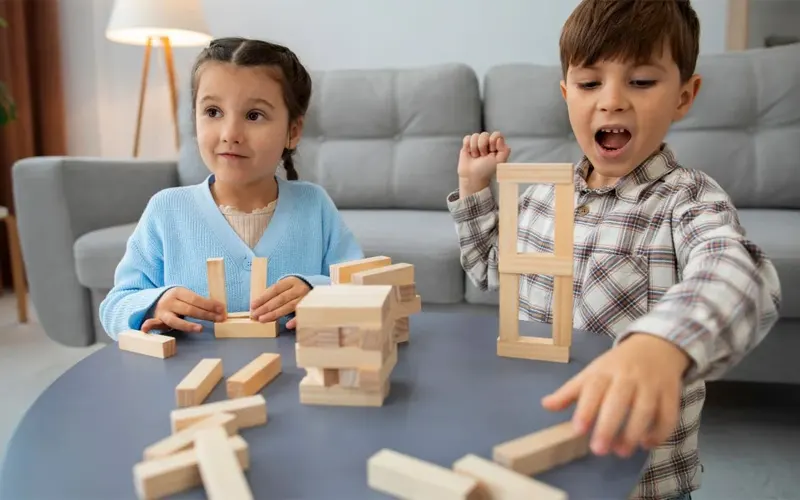
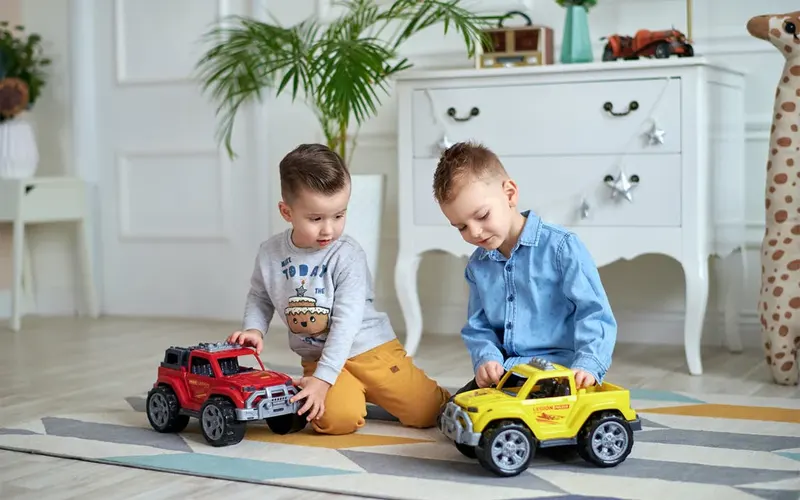

When Does Parallel Play Start and End?
Parallel play typically begins during early childhood, often observed between the ages of 18 months and 3 years old. It’s a natural and critical phase of social development where toddlers play side-by-side without directly interacting. Although they may appear to be playing alone, they are actually observing, imitating, and learning from one another, laying the groundwork for more complex social behaviors.
The end of the parallel play stage is less defined by age and more by developmental readiness. Most children begin to transition out of parallel play around 3 to 4 years old, when associative play and cooperative play become more dominant. In the following stages, children start to engage more directly with peers, communicate their ideas, and work together toward a common goal, like building a tower or role-playing a story.
Notice: These age ranges are flexible. Some children may start earlier or continue longer depending on their temperament, developmental pace, or environmental exposure. Some may engage in parallel play beyond age 3, especially in new or unfamiliar environments, and that’s perfectly fine. Parallel play can also be observed in older children with developmental delays or social communication differences. It’s important to remember that every child develops at their own pace. It can serve as a comforting bridge between solitary exploration and whole social interaction.
Benefits of Parallel Play in Childhood Development
Parallel play may appear passive or even isolated at first glance, but it serves as a foundational building block in early childhood development. This seemingly simple behavior offers a range of cognitive, emotional, and social benefits that set the stage for more advanced forms of play and interaction. Let’s explore why parallel play matters.

- Social Learning Without Pressure
One of the most significant benefits of parallel play is that it allows children to observe social norms without the pressure of direct interaction. By watching how other children use toys, express emotions, and respond to stimuli, toddlers begin to internalize social behaviors. This kind of passive learning can reduce anxiety and build confidence, especially in shy or introverted children. - Language Development Through Observation
Even without speaking directly to peers, children engaged in parallel play are often exposed to language-rich environments. They hear other children talking, narrating their actions, or expressing their needs, which helps them develop vocabulary and understand speech patterns. This type of exposure is beneficial for bilingual or language-delayed children. - Fostering Independence and Self-Discovery
Parallel play provides ample opportunity for children to explore independently. Without the need to negotiate rules or share, toddlers can focus on their interests, make decisions, and experiment with cause and effect. These experiences help foster a sense of autonomy, self-awareness, and personal boundaries. - Developing Motor and Cognitive Skills
Using toys, blocks, or creative tools like crayons during parallel play encourages the development of fine motor skills and problem-solving abilities. As children mimic others or try to improve their creations, they’re refining their coordination and learning how to plan and execute tasks—critical components of cognitive development. - Encouraging Emotional Regulation
Children often experience frustration or excitement during play. Parallel play gives them a controlled environment to manage these emotions, observe how others react to similar situations, and adapt their behavior accordingly. This early practice of emotional regulation contributes to future resilience and empathy. - Bridge to Cooperative Play
Perhaps most importantly, parallel play acts as a stepping stone to more interactive social behavior. Children who feel safe playing near others are more likely to initiate contact, share toys, and communicate ideas gradually. Over time, this leads to associative and cooperative play, where joint goals and teamwork become central.
How to Encourage Parallel Play?
Parallel play is not a passive or random occurrence—it is a developmentally rich and cognitively active phase in early childhood, laying the groundwork for complex social and emotional growth. Encouraging this stage effectively requires more than just offering toys; it involves a nuanced understanding of child development, strategic environmental design, and intentional adult facilitation. Below are evidence-informed, professional strategies for fostering parallel play in a way that supports the whole child.

1. Understand the Developmental Purpose
Before taking action, it’s important to recognize why parallel play matters. Rooted in Piaget’s theory of cognitive development and supported by Vygotsky’s social learning theory, parallel play represents a critical intermediary stage between solitary play and cooperative interaction. Children aged 18 months to 3 years engage in this form of play as they begin to recognize others as separate beings, develop joint attention, and gradually expand their social awareness. Any effort to encourage parallel play must respect this nonverbal, observational learning space.
2. Design Spatial and Sensory-Friendly Play Environments
An optimal setting for parallel play minimizes overstimulation while promoting proximity. Use soft rugs, beanbags, or low shelves to guide children into shared spaces without forced interaction naturally. The environment should support both visual access and personal space, reducing the cognitive load required to navigate social settings.
Include a combination of low-arousal zones for quieter children and dynamic zones for active players. This allows each child to engage at their own sensory threshold while still remaining part of a collective play environment, promoting adaptive regulation of attention and arousal, as outlined in occupational therapy research.
3. Provide Similar Toys
Parallel play thrives when children have access to similar toys. This doesn’t mean identical items, but those that offer the same play potential. Think of toys that allow for open-ended creativity, such as building blocks, puzzles, crayons, or pretend kitchen sets. By offering comparable resources, you create opportunities for children to observe each other’s actions and eventually mimic behaviors, even without direct interaction.
أرسل لنا رسالة إذا كان لديك أي أسئلة أو اطلب عرض أسعار. سيقدم لك خبرائنا الرد خلال 48 ساعة ويساعدونك في اختيار المنتج المناسب الذي تريده.
3. Set the Stage with Gentle Supervision
While it’s essential to provide freedom, gentle supervision helps guide parallel play subtly. Adults can model simple behaviors, such as stacking blocks or drawing pictures, and then step back to observe how children mimic or explore on their own. Use encouragement and praise to reinforce participation and creativity rather than forcing interaction.
4. Use Short Play Sessions and Gradually Extend
Toddlers have limited attention spans. Start with short, focused play sessions and gradually increase the time as they become more comfortable playing near others. This gradual approach builds tolerance and reduces potential frustrations, paving the way for eventual cooperative play.
5. Respect Individual Play Styles
Each child has a unique play style and personality. Some might dive into activities immediately, while others prefer to observe quietly before joining in. Respect these differences. Avoid pressuring children to interact or share if they’re not ready. Remember, the value of parallel play lies in side-by-side engagement, not in verbal or physical interaction.
6. Encourage Verbal and Non-Verbal Communication
Even though parallel play doesn’t involve direct collaboration, it’s still an excellent opportunity to develop communication skills. Encourage children to use words to describe what they’re doing or feeling. Use prompts like “Tell me about your drawing” or “What color is your car?” Over time, these prompts help children become more expressive and socially aware.
7. Incorporate Role Models and Peer Play
Sometimes, older siblings or slightly older peers can serve as excellent role models during parallel play. Younger children often look up to them and imitate their actions. Organize playdates or group activities with a mix of ages to facilitate observational learning and inspire new play ideas.
8. Be Patient and Celebrate Small Wins
Parallel play doesn’t shift into interactive play overnight. Be patient and recognize small milestones—whether it’s a child offering a toy, copying a peer’s action, or simply choosing to sit closer to another child. Celebrate these subtle signs of social development with smiles, praise, or even a small reward.
9. Integrate Routine and Familiarity
Children respond well to routine. Establishing a regular parallel play time during the day, such as after snacks or before naptime, helps set expectations and builds comfort over time. Consistency reinforces the habit and provides structure in a toddler’s world.
10. Observe and Reflect
Caregivers and educators should take the time to observe children’s interactions during parallel play. Reflecting on their behaviors can reveal insights into preferences, developmental progress, or social challenges. This understanding allows for more tailored support and encouragement.
Best Toys and Activities That Support Parallel Play
اختيار الصحيح العاب تعليمية and activities plays a pivotal role in promoting parallel play, especially in early childhood. The goal is to provide materials that allow children to play independently, yet side by side—enabling observation, imitation, and gradual social learning. The best toys for parallel play are open-ended, duplicable, and low-pressure, reducing the likelihood of conflict while nurturing creativity.
Open-Ended Building Toys
Blocks, magnetic tiles, and stacking cups are excellent for parallel play. Children can each build their own structures while seated near others, watching, imitating, or experimenting at their own pace. These toys allow for creativity and fine motor development without demanding teamwork.
- Wooden Blocks: Encourage creativity, balance, and spatial reasoning; ideal for independent yet side-by-side building.
- Magnetic Tiles: Snap-together tiles that promote geometric exploration and visual imitation.
- LEGO Duplo: Larger bricks for toddlers to construct simple shapes and towers near peers.
- Stacking Cups: Simple and satisfying for toddlers to stack, nest, or sort while observing others.
- Foam Building Bricks: Lightweight and safe for bigger structures, ideal for collaborative observation.
- Interlocking Gears and Cogs: Stimulate cause-and-effect thinking while building adjacent mechanical designs.
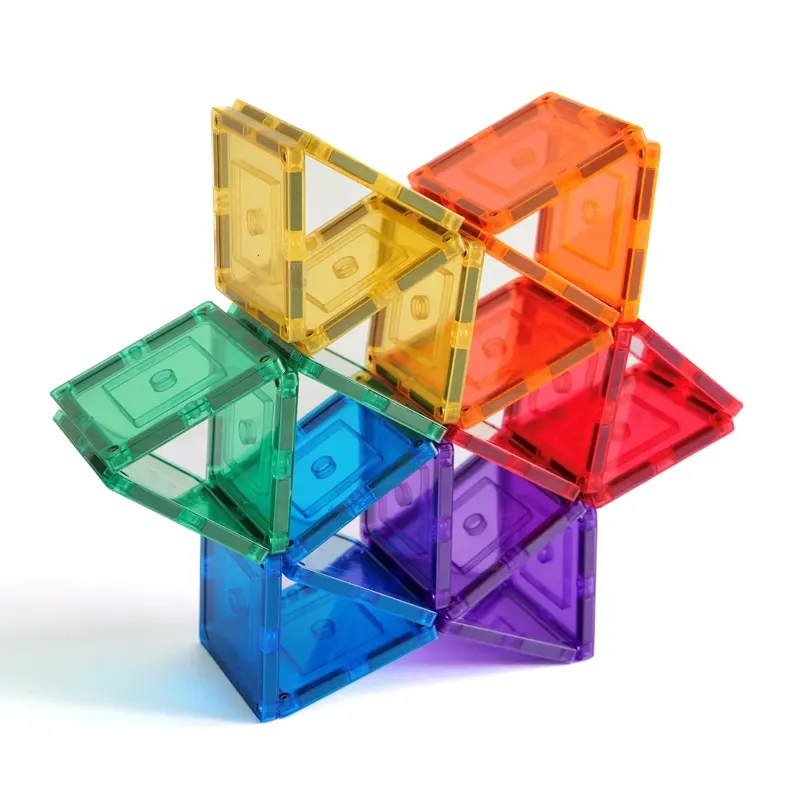
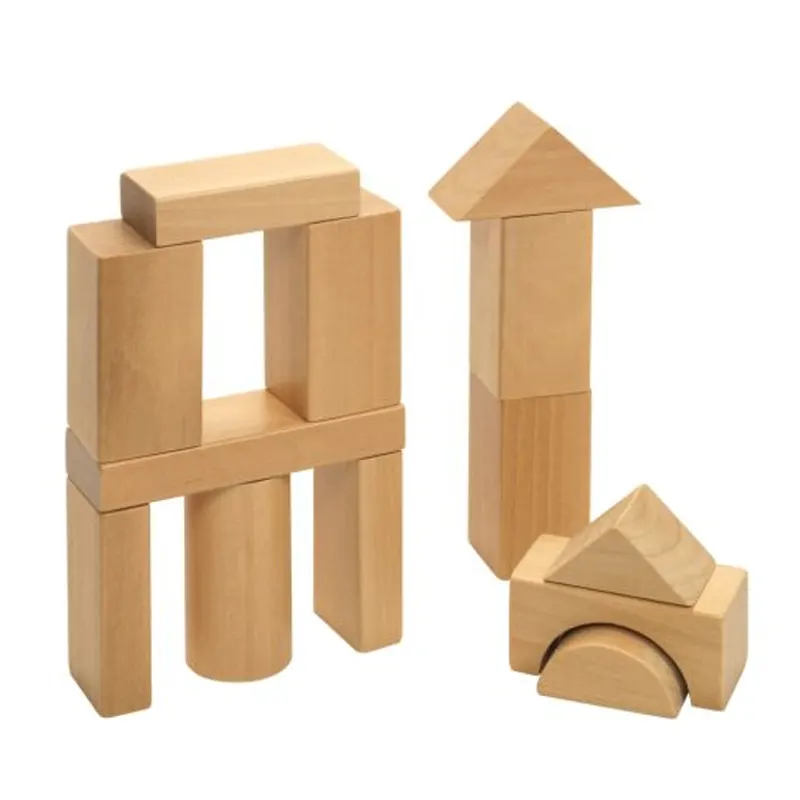
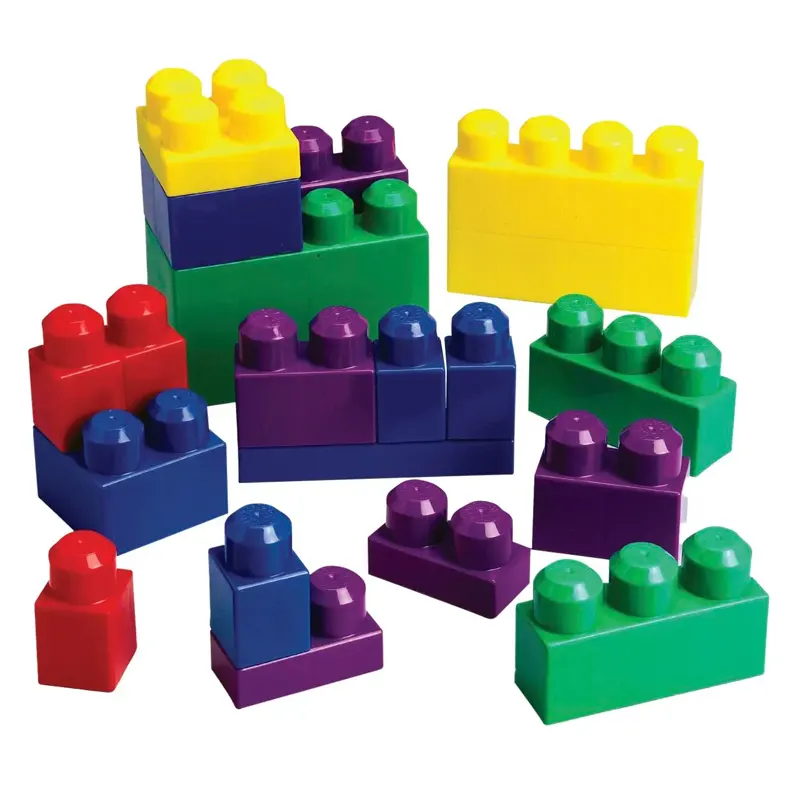
Pretend Play Sets
These pretend-play setups are ideal for independent role-playing. Children can mimic real-life actions like cooking or fixing things without needing a shared storyline. Having multiple pieces (pots, utensils, tools) reduces competition and makes side-by-side pretend play smoother.
- Toy Kitchen Sets: Children “cook” individually but often mirror each other’s actions.
- Doctor Kits: Promote solo role-play like check-ups and bandaging within a shared space.
- Tool Benches: Kids hammer, drill, and “fix” things beside peers doing the same.
- Grocery Store Playsets: Children scan, bag, or “shop” independently with similar props.
- Cleaning Toy Sets: Mop, sweep, and dust toys allow children to copy routines next to one another.
- Baby Doll Accessories: Each child feeds or dresses their own doll, often mimicking familiar care routines.
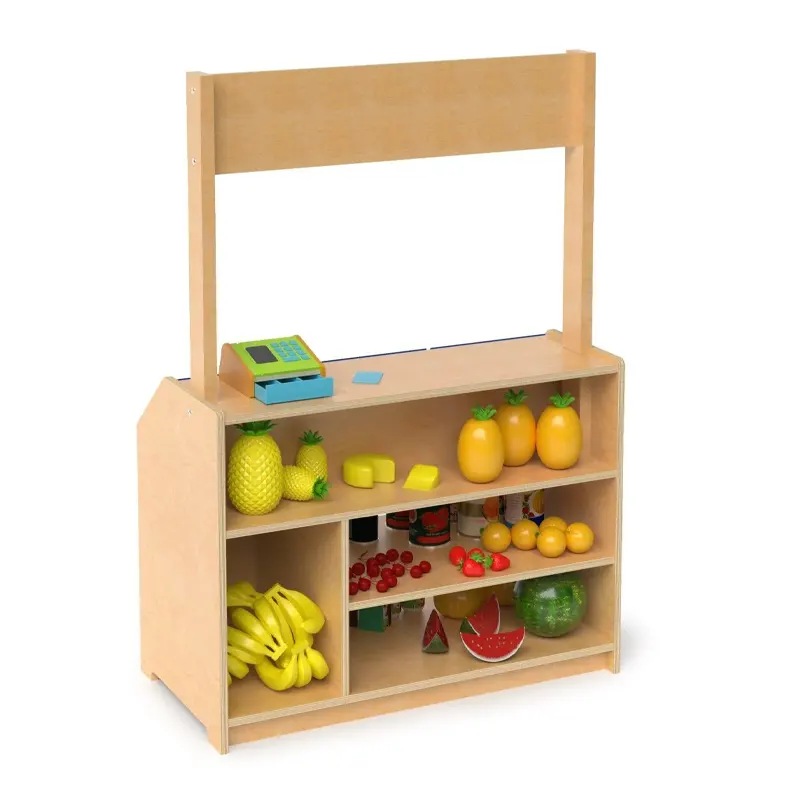


لوازم الفنون والحرف اليدوية
Individual sets of crayons, coloring books, playdough, or stickers encourage children to focus on their own creative projects while being inspired by what nearby peers are making. They may not talk, but they observe and imitate designs, colors, and shapes.
- Crayons and Markers: Allow colorful self-expression and visual exchange.
- Coloring Books and Sketch Pads: Offer personal creative space while inspiring peer imitation.
- Playdough and Tools: Encourage sculpting, pressing, and pattern-making in tandem.
- Stickers and Collage Papers: Support quiet solo art while sharing materials or observing others’ choices.
- Washable Paints and Brushes: Great for side-by-side easel painting or tabletop exploration.
- Beads and String: Enhance fine motor skills and repetition through parallel necklace or bracelet making.

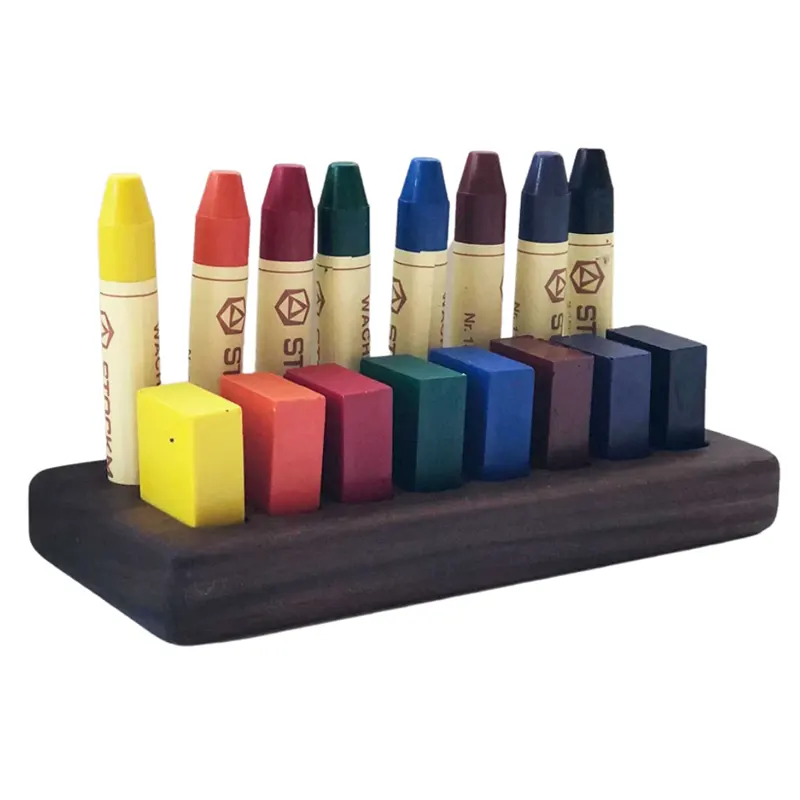

Gross Motor Equipment
In outdoor settings, ride-on cars, sand and water tables, and gardening kits promote physical activity in parallel. Children often follow each other’s paths or mimic movements, engaging socially through physical proximity even without verbal interaction.
- Balance Bikes: Perfect for outdoor parallel movement and mimicking riding patterns.
- Scooters and Ride-On Cars: Allow fast, fun physical activity in shared space without direct interaction.
- Tunnels and Crawl Sets: Promote turn-taking and parallel gross motor use.
- Foam Climbing Mats: Enable independent climbing and movement within view of others.
- Mini Trampolines: Let children bounce individually but rhythmically side by side.
- Stepping Stones or Balance Paths: Encourage coordination while navigating independently in the same area.

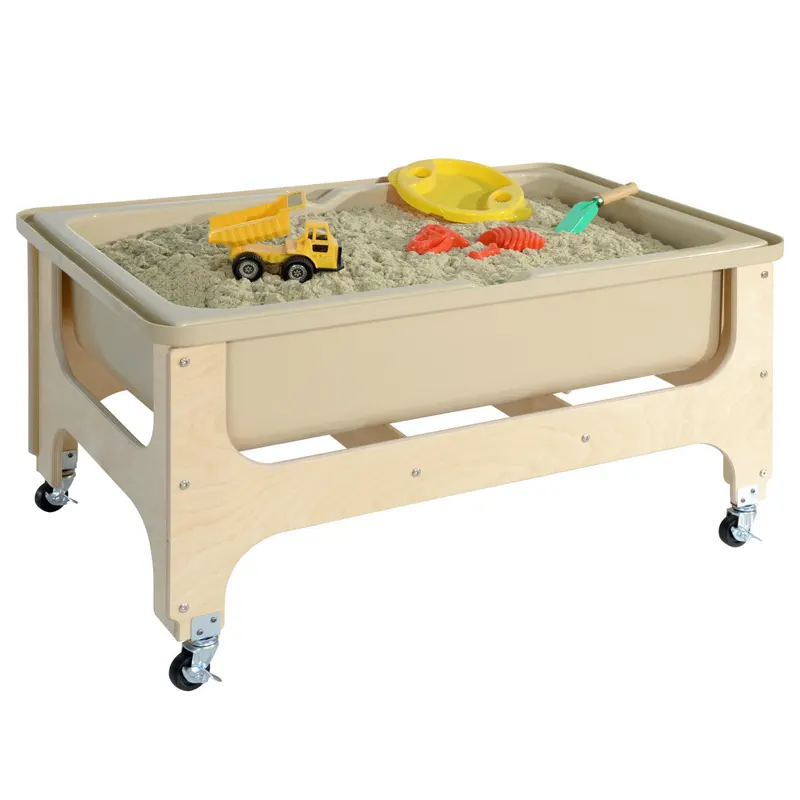

Books and Quiet Activities
Picture books, soft books, or story cards are excellent for parallel play. When children sit together reading separately, they often peek at others’ pages or mimic page-flipping, building early literacy and attention span alongside social exposure.
- Picture Books: Visually engaging books with colorful illustrations and minimal text, perfect for toddlers to explore independently while observing peers’ reading behaviors.
- Soft Books: Fabric books that are safe, tactile, and ideal for infants or sensory-sensitive children. Great for solo exploration during parallel play in quiet corners.
- Story Cards: Flashcard-style images with short prompts that children can browse or arrange in sequence, encouraging narrative thinking beside others doing the same.
- Lift-the-Flap Books: Interactive books that engage fine motor skills and curiosity; children enjoy seeing how others react to each hidden surprise.
- Touch-and-Feel Books: Sensory-rich books with textured panels that invite repetitive solo engagement and observational learning.
- Audio Storybooks or Read-Along Devices: Allow children to listen to narrated stories independently using headphones or a speaker, enabling shared focus in group settings.
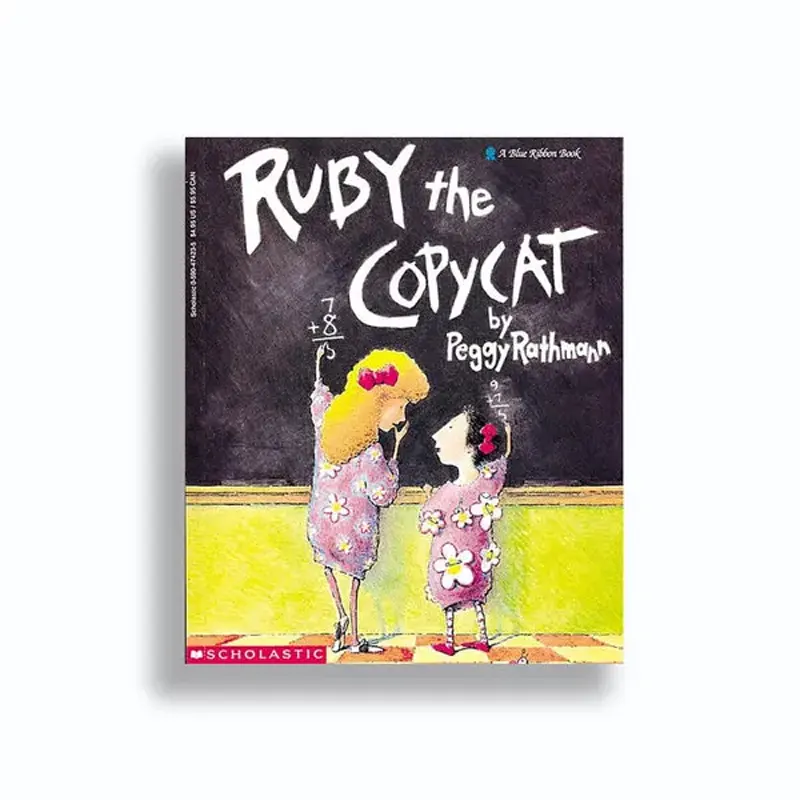

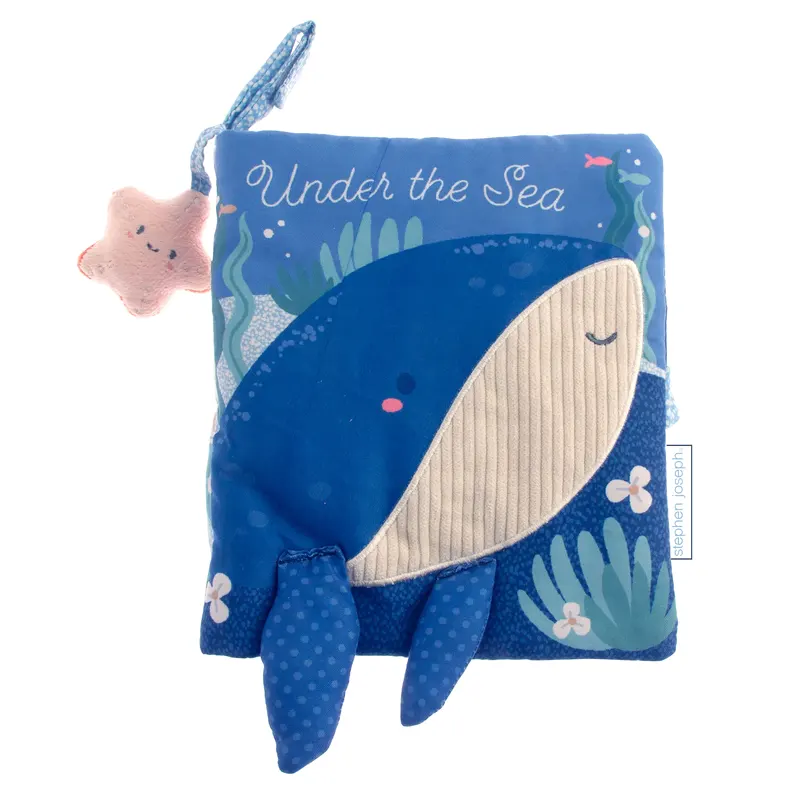
Tips for Setting Up a Parallel Play Environment with Toys
To maximize the effectiveness of these toys and activities:
- Offer duplicates: Two of each toy avoids conflict.
- Avoid competitive games: Focus on activities without winners or losers.
- Arrange the space: Give enough physical room so kids feel secure playing beside each other.
- Rotate regularly: Fresh toys maintain interest and stimulate new play ideas.
- Observe without interrupting: Let children take the lead, only stepping in to support or mediate if needed.
Comparison of Parallel Play and Other Play Stages
While each stage of play is unique, some are commonly mistaken for parallel play due to their subtle similarities. Here’s a focused comparison to help clarify the differences:
- Parallel Play vs. Solitary Play
In solitary play, the child is fully engaged in their activity with no regard for others nearby. They are unaware of or uninterested in peer presence.
In parallel play, children play independently but remain aware of and often mimic their peers. The proximity and observational learning distinguish it from solitary play. - Parallel Play vs. Onlooker Play
In onlooker play, the child does not engage in play at all—they watch others. There’s curiosity but no direct participation.
In parallel play, the child is actively playing, just not interacting with others. They are doing their own thing while still taking cues from nearby play. - Parallel Play vs. Associative Play
Associative play involves some interaction, such as sharing toys, talking, or acknowledging one another’s activities, even if there’s no shared goal.
Parallel play lacks this interaction. Children play side by side with little or no communication, but the play themes may still be similar.
Summary of Key Differences
| Type of Play | Child Plays Alone | Observes Others | Interacts with Others | Imitate Peers | Shares Toys |
|---|---|---|---|---|---|
| Solitary Play | √ | × | × | × | × |
| Onlooker Play | × | √ | × | × | × |
| Parallel Play | √ | √ | × | √ | × |
| Associative Play | × | √ | √ | √ | √ |
Parallel Play and Children with Special Needs
Parallel play holds unique value for children with special needs, offering a low-pressure gateway into social interaction. For children on the autism spectrum, with ADHD, speech delays, or sensory processing disorders, traditional forms of group play can often feel overwhelming. Parallel play provides an ideal developmental bridge, helping them build comfort, social awareness, and communication skills in a gentle, non-intrusive manner.
Why Parallel Play is Beneficial for Special Needs Children?
- Reduces Social Pressure
Unlike cooperative or group play, parallel play allows children to be near peers without the stress of direct interaction. This helps children with anxiety or social communication difficulties feel included but not overwhelmed. - Encourages Observation and Imitation
Many children with developmental delays learn best through modeling. Parallel play encourages them to watch others and possibly imitate gestures, language, or actions over time, building important skills in a natural, self-paced way. - Promotes Routine and Predictability
Children with autism or sensory sensitivities often thrive in structured environments. Parallel play can become part of a predictable routine where they engage in similar activities alongside others, supporting comfort and engagement. - Builds Comfort with Proximity
For children who struggle with personal space or have tactile defensiveness, parallel play gradually increases tolerance for being near others without requiring direct contact or touch.
Supporting Parallel Play in Special Needs Settings
Children with special needs benefit from parallel play, but their unique sensory, communicative, and behavioral profiles require thoughtful, tailored strategies. While the general structure of parallel play is similar, the way it is facilitated for neurodivergent children must be more intentional, patient, and supportive of their differences.

- Use of Visual Supports and Social Stories
Many children on the autism spectrum or with language delays struggle with verbal instructions. Visual supports such as picture cards, first/then boards, or short social stories explaining “how to play near others” can make expectations clear and reduce anxiety. - Controlled Sensory Environment
Children with sensory processing disorders may be easily overwhelmed by noise, textures, or light. Supporting parallel play in a calm, low-stimulation setting with access to sensory tools (like noise-canceling headphones, fidget toys, or textured mats) ensures a safe space for interaction. - Individualized Proximity Levels
Unlike typically developing peers, special needs children may need gradual exposure to proximity. Start with parallel play at a greater distance and slowly reduce the space as comfort increases. For some, even being in the same room at first is a positive step. - Modeling Through Adult-Child Parallel Play
Many special needs children require adult scaffolding. An educator or therapist can sit beside the child, engaging in similar play. This not only demonstrates behavior but also establishes predictability. Eventually, another child can be introduced into the same setup. - Use of Structured, Predictable Activities
Open-ended play may be overwhelming. Instead, offer simple, structured activities with clear beginnings and ends—like matching games, stacking cups, or shape sorting—so the child can focus on play without being overwhelmed by choices or social ambiguity. - Support Transitions and Flexibility
Transitions can be especially challenging. Using timers, countdowns, or visual transition cues helps children with autism or executive function issues move into and out of play sessions smoothly, maintaining a sense of security and continuity. - Celebrate Micro-Progress
A glance toward a peer, mimicking an action, or sitting in the same play space without distress may seem small, but for many children with special needs, these are foundational milestones. Recognizing and reinforcing them is key to long-term social development.
Common Challenges and Misconceptions About Parallel Play
Parallel play is often misunderstood, especially by adults expecting more direct interaction among children. These misconceptions can lead to missed opportunities to support this important developmental stage. Below is a practical table summarizing the most frequent challenges, misconceptions, and evidence-based solutions:
| Common Challenge | Misconception | Reality | Suggested Solution |
|---|---|---|---|
| Children don’t talk to each other during play | “They’re not socializing, so it’s not useful.” | Social learning begins through observation, not always direct speech | Encourage shared space and let imitation happen naturally |
| Child appears to be ignoring peers | “He’s antisocial or not interested in others.” | Many children are observing silently and learning passively | Reinforce positive behaviors like glancing at others or mimicking actions |
| Children play with the same toys but don’t share | “They’re selfish or not learning cooperation.” | Sharing is a later developmental milestone; parallel play builds comfort around others first | Provide duplicate toys to reduce frustration and teach turn-taking later |
| No visible collaboration or joint play | “They’re not learning teamwork.” | Parallel play develops the foundation for future cooperative play | Give time and space—cooperation comes later when comfort and trust are built |
| Child becomes distressed when others get too close | “Something is wrong with their social skills.” | Some children, especially those with sensory sensitivities, need gradual social exposure | Start with wider personal space and slowly decrease the gap over time |
| Parallel Play looks repetitive or aimless | “They’re not learning anything.” | Repetition helps children understand cause and effect and build motor planning | Gently model varied ways to use the same toy; offer verbal encouragement |
| Parallel play lasts “too long” before transitioning | “The child is stuck developmentally.” | Some children need more time in each stage based on their individual pace | Be patient; watch for signs of emerging interaction rather than rushing the process |
When to Be Concerned: Developmental Red Flags
Parallel play is an expected stage of early childhood development, but like any milestone, it can reveal signs of concern when certain behaviors persist or are absent. While every child develops at their own pace, it’s essential to know when behaviors during parallel play might signal something more significant. Below are key red flags to look out for, along with explanations and guidance on when to seek professional advice.
Lack of Interest in Peers
By the age of three, most children begin to show curiosity about other kids, even if they’re not ready to play with them directly. If a child consistently ignores peers or avoids playing near them altogether, it could be a sign of a social communication delay, such as autism spectrum disorder. Observing no reaction, eye contact, or awareness of others in a shared play space may warrant further evaluation.
Absence of Imitation
Parallel play naturally involves imitation. Children observe how others stack blocks, roll toy cars, or handle crayons, and they often mimic these actions. If a child never imitates peers or adults during play, it may point to challenges in social learning or cognitive processing. Imitation is a cornerstone of learning at this stage—its absence should not be overlooked.
Distress Around Other Children
Some children feel uncomfortable around others, especially in noisy or unpredictable environments. However, intense distress—crying, screaming, fleeing—whenever another child comes near may suggest sensory processing issues or extreme social anxiety. These reactions go beyond shyness and may require intervention to build tolerance and comfort in social settings.
Excessive Repetitive Play
While repetition is regular and often enjoyable for toddlers, a child who becomes fixated on a single repetitive action (e.g., spinning wheels, lining up toys) without variation or interest in others’ activities may be exhibiting early signs of rigidity. This behavior, especially if paired with a lack of interaction, could be associated with autism spectrum behaviors.
No Eye Contact or Social Awareness
During parallel play, children may not interact directly, but they usually notice peers, glancing at them, smiling, or shifting positions in response to nearby movement. If a child never acknowledges others, avoids eye contact entirely, or seems unaware of the social environment, it could indicate deeper developmental or emotional concerns.
Significantly Delayed Language Development
Parallel play often stimulates language through self-talk, labeling toys, or hearing others speak. If a child has minimal speech, doesn’t attempt to communicate, or seems unable to understand simple language, and this persists beyond the toddler years, a speech or language delay may be present. Language delays often go hand in hand with social delays.
No Transition to Later Play Stages
While it’s normal for some children to remain in the parallel play stage longer than others, by age 4 or 5, many begin to show interest in associative or cooperative play. If a child shows no desire to engage with peers, doesn’t attempt to join in group activities, or is consistently isolated without distress, it may signal a delay in social-emotional development.
When to Take Action
If one or more of these signs persist over time or appear in combination, it’s advisable to:
- Explore early intervention services
- Keep detailed observations across various settings (home, daycare, park)
- Speak with your child’s pediatrician
- Request developmental screening or referrals to specialists (e.g., speech-language therapist, occupational therapist, developmental psychologist)
الأسئلة الشائعة
- Is parallel play considered a social activity?
Yes, although it may not involve direct interaction, parallel play is still a social behavior. It helps children get used to being around peers, which is an essential step toward developing social skills. - How can teachers facilitate parallel play in a classroom setting?
Teachers can set up play stations with duplicate toys, arrange spaces where children can sit side by side, and use soft encouragement or modeling to promote engagement without forcing interaction. - What’s the next stage after parallel play?
The next stage is associative play, where children begin to talk to each other, share toys, and show interest in what their peers are doing, even if they don’t follow a common goal. - Does parallel play happen only in toddlers?
It’s most common in toddlers, but it can also be seen in older children with developmental delays or when children are getting to know new peers in unfamiliar environments. - Can children with autism engage in parallel play?
Yes. Parallel play can be especially beneficial for children on the autism spectrum, offering a non-threatening environment to build social skills and tolerance for peer proximity. - How can I encourage my child to move beyond parallel play?
Offer opportunities for shared activities like turn-taking games, encourage imitation through modeling, and gently prompt interaction without forcing it. Transitioning naturally takes time. - Are there toys that support parallel play?
Yes. Open-ended toys like blocks, sensory bins, puzzles, play kitchens, and matching games are ideal. Providing identical or similar sets for each child helps reduce conflict and supports independent yet adjacent play. - What if my child becomes distressed during parallel play?
Some children are sensitive to noise, touch, or proximity. Try increasing physical space between children, providing calming tools, and gradually building tolerance over time with support from specialists if needed.
خاتمة
Parallel play is far more than just children playing side by side without talking—it is a powerful, foundational stage in early childhood development. It nurtures social observation, builds comfort with peer presence, encourages imitation, and supports emotional regulation. While it may seem passive on the surface, this form of play is actively shaping how young children engage with the world and prepare for more complex social interactions.
By understanding its unique features, supporting it with intention, and knowing when to watch for developmental red flags, adults can help every child thrive at their own pace. Ultimately, parallel play is not a delay—it’s a quiet but essential step forward in a child’s journey toward social connection and confidence.

